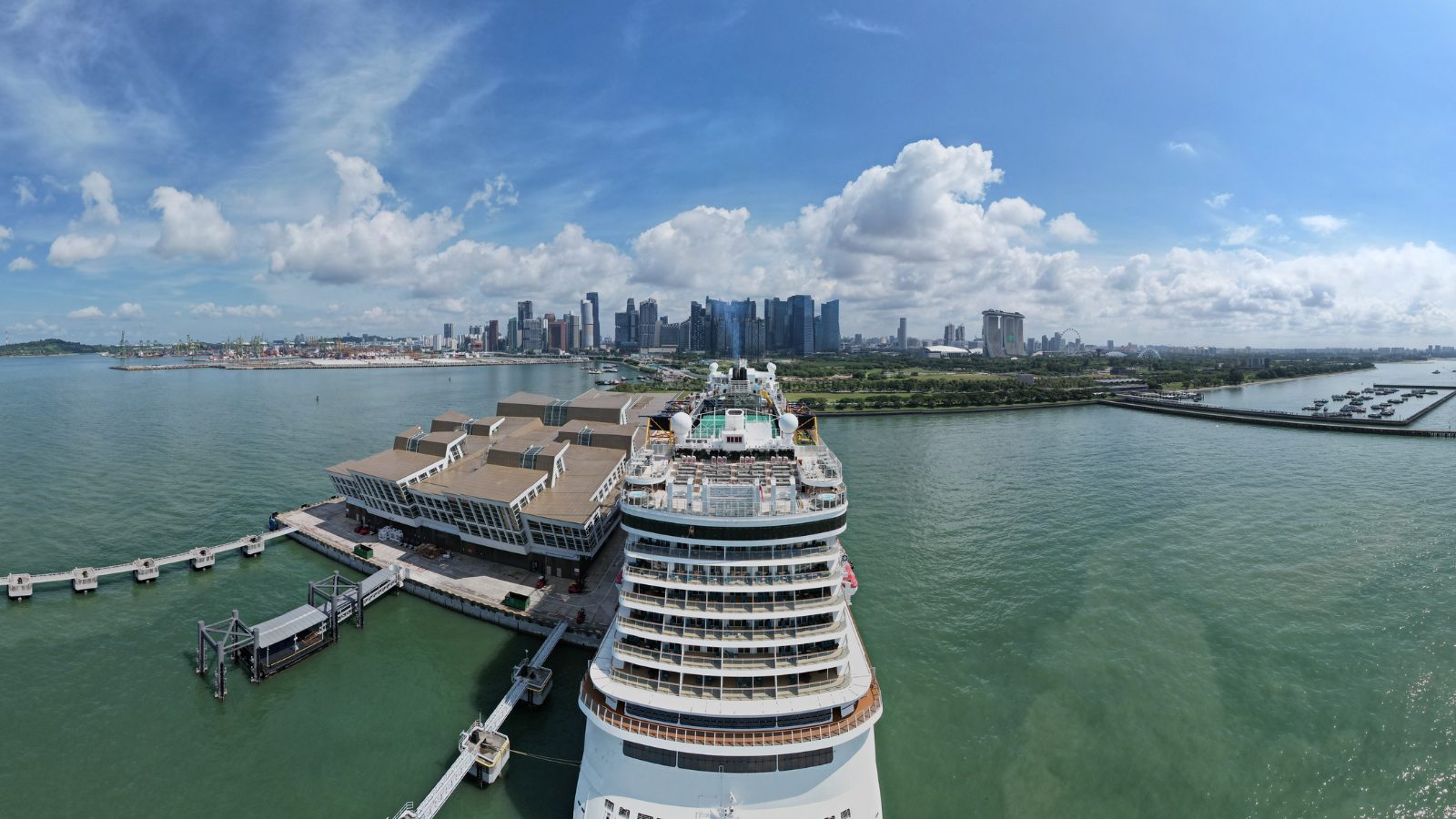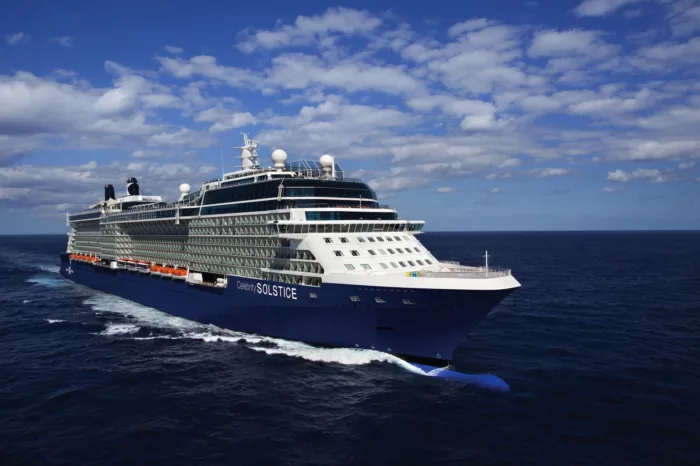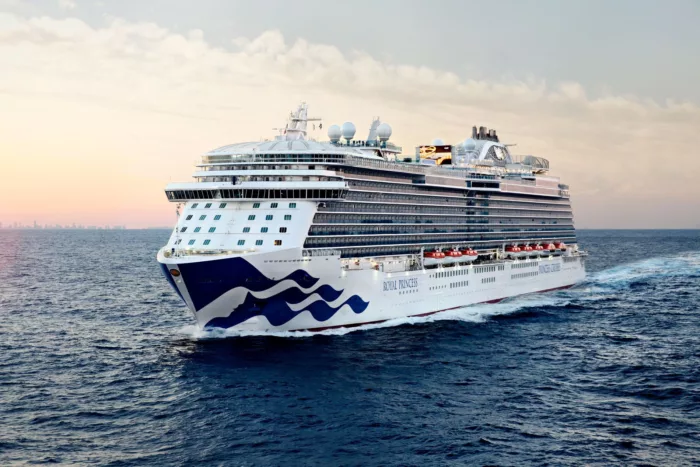
The porthole murder: Taking secrets to the breakers’ yard
A beautiful actress disappears from her cabin, thrust through the porthole by a predator among the crew. But was she still alive when hitting those darkened and shark-infested waters? The ship – MV Durban Castle – has since long been scrapped, taking her secrets to the grave
March 28, 1962
Amid the blurred drizzle of London’s cold spring morning, as the Union-Castle Mail Steamship Company gently hinged a gangplank between pier and vessel, MV Durban Castle’s final passengers descended onto the dockside. T
he ship was now suspended in limbo, her radiant past and proud service deemed worthless by society’s hard financial glare. Times had changed, and the breakers’ yard awaited.
Corridors previously bustling with activity now echoed in silence. Cabins once employed to give wartime refuge for Greek Royalty lay deafened by passivity.
Quietude engulfed the ship’s reception areas, where each rampant judder of the clock pushed Durban Castle further into immediate obscurity. Darkness fell that day, and the lights never came back on.
As April dawned, the liner passed to Eisen & Metall GmbH of Hamburg for scrap. Recognised as the first British passenger vessel sold to post-war Germany, she went proudly to the flame with a stiff upper lip.
Yet, as demolition workers set about MV Durban Castle’s destruction, one cabin stopped them dead in their tracks.
Cabin 126. The mausoleum of actress Eileen Isabella Ronnie 'Gay' Gibson’s mortal soul. Her muffled anguish still oozed from luxurious fixtures now poised beneath brandished axe and hammer.
Hushed stillness fell before the infamous bed on which Gibson perished, a swirling presence passing unsaid between men as though finally escaping. The air felt deathly still.

Delicately and with respect, cabin 126 was taken apart, unescorted by the violence typically reserved for such procedures. An eerie demand for civility transfixed all who entered, akin to treading across an unmarked tomb.
The ship's structure slowly disappeared over the following months, consigning the threshold of 21-year-old Gibson’s trauma firmly to history. Her body was never recovered, lost to the ocean following deadly events of October 1947.
Flesh and blood perished, leaving a haunting pneuma that hung over MV Durban Castle; even as the liner transformed toward a twisted wreck.
Yard workers often spoke of sensing Gibson’s uneasy presence throughout the ship’s destruction – watching their every move; scrutinising each new face for her killer. If evidence of her ultimate demise still resided within the vessel, it had just been removed and annihilated.
There was nothing left. By 1962, other than a lonely grave in unknown waters and a handful of acting credits, only devastated relations spoke her name.
With time’s onward march, those who remembered Gibson faded into the funeral registrars, leaving her homicide as the only contemporary attestation to any existence.
Gay Gibson remains missing to this day, but not forgotten. Far from it. We have a pretty good idea of what happened to her – feeding an online age hungry for old-school mysteries.
Although witness accounts and stories clash, what has been confirmed is this: Gibson’s corpse was fed through a porthole into the South Atlantic’s shark-infested waters.
There's even a name connected to the crime. He was sentenced to death, although he would never reach the gallows – courtesy of Winston Churchill.

James Cambs: The porthole murderer
June 3, 1948
It was the penultimate question of the trial put by barrister J D Cassell KC to deck steward, James Camb: “Are you proud of what you did on that night?”
Camb, aged 30, fiercely accused of murdering Gay Gibson on the Southampton-bound liner, responded: “No. I am ashamed”. Audible gasps and murmurings sparked the air.
Voices spewed from an oversubscribed public area. As with any trial regarding the demise of a celebrity, the case had not gone unnoticed. All seats were filled.
Following several hours in the witness box at Hampshire Assizes, the accused put forth an outrageous explanation – claiming to have panicked when Gibson died suddenly during consensual relations.
Fearful of being caught in a compromising situation with a high-class passenger, “I put her arms through the porthole and the rest of the body followed quite easily.”
“I managed to lift her to the porthole and pushed her through. I am fairly certain that at the time she was dead, but I was terribly frightened.”

James Camb’s confident and almost jaunty demeanour contrasted with the seriousness of the situation. Among the 30-plus exhibits arranged in the courtroom were the white-enamelled bedstead and linen from Cabin 126, a plywood-mounted replica of the porthole, and the door to her onboard residence.
Squares of cellophane smothered the cabin door, decorated by arrows highlighting Camb’s fingerprints.
All evidence pointed to him. He had everything to lose, including his family. While married to the mother of his child, Camb held a reputation as both a philandering predator and an aloof womaniser.
He firmly believed, with prime arrogance, that women traveling solo would fall to his charms and easy-going ways. And there was narcissistic reasoning to his methods.
Camb was a handsome young man, who made serious effort to dress smartly and appear sophisticated, having perfected his techniques after 14 years at sea – mainly with the Union Castle line.
He made £28 a month, often receiving £50 in tips per voyage – equating to over £2500 per month by modern inflation – a huge amount of money for the time.
In those 14 well-paid years, James had courted many female passengers. Even a round of pregnancy scares hadn’t deterred his lothario attitude, although he had been reprimanded by his employer for such association with women. Not that scalding words from Union Castle could stop him.

Gay Gibson: A life cut short
Actress Eileen Isabella Gibson was 21 years of age when boarding her final voyage. Professionally known as ‘Gay Gibson’, the vivacious beauty had made a name for herself by dressing well and practicing her formal austere.
Shining with all the attributes lusted for by Cambs, it didn’t take long for Gibson to catch his eye. It would turn out to be a fatal attraction.
The actress had spent six months in South Africa appearing in a range of stage productions, before making plans to head for Great Britain and the theatrical allure of London’s West End. Booked aboard a 15-night sailing with MV Durban Castle, Cambs simply could not resist.
Going against all the regulations, he was caught lurking around Gibson on regular occurrences. Even a stern warning from a senior officer failed to cool the fever in his blood.
Other than Camb’s shadow, Gibson spent most of the voyage alone. Fellow passengers witnessed her somewhat listless behaviour, leaning over the ship’s railings as though lost in worry and rooted desperately within low spirits.
She was last seen alive around 1am, on deck while smoking, and wearing a black evening dress with silver shoes. This was typical attire for an airless tropical evening. She told watchman James Murray that it was “too hot down below” to sleep.

Naturally, the above scenario gave wind to rumours of suicide once news of her disappearance spread from port to starboard. With fear that Gibson had fallen overboard, the ship was turned around for a three-hour sweep of the ocean, yet efforts proved fruitless.
Derailed with heavy hearts, Captain Patey and his crew piloted MV Durban Castle back towards their original route, leaving the lost actress to nature’s mercy.
That’s when James Murray spoke up, and events took a darkened turn. Cabin 126 had played host to mysteriously foul events.
Murray reported that he answered a call from Gibson’s cabin at 3am, two hours after her last sighting on deck. Two bells had rung out, indicating that she had requested both the steward and stewardess.
Summons of this nature were odd, and upon trying to enter, cabin 126 was blocked by Camb; standing in the doorway and uttering “It’s all right" before slamming the door shut.

Captain Patey took heed of Murray’s suspicions, sending for Camb to explain himself. During this conversation, Camb underwent an examination – where scratches to his wrist and shoulders were uncovered; claimed to have come from scratching himself due to the intense heat within the ship. The ship’s surgeon, however, couldn’t find any evidence of a skin disorder or irritation.
The stewardess who discovered Gibson’s cabin empty that morning had also pointed out several telling aspects. Firstly, the bed sheets and pillows were stained with blood and saliva, while the actress’ night clothes were missing.
Secondly, the cabin held an air of disarrangement and, most importantly, all of Gibson’s clothes and artefacts remained. If she had left on her own accord, then these items would surely have gone with her.
Putting matters together to form an assumed chain of events, Captain Patey contacted the Union Castle office on Fenchurch Street in London. An official order was given to "padlock and seal" cabin 126 and to "disturb nothing. CID officers will come aboard at Cowes Road."

The truth?
October 25, 1947
MV Durban Castle anchored at Cowes Road following a tense 15-day sailing. As Union-Castle’s tender boats gingerly set off, the onboard hymn remained one of suspicion and anxiety. Speculation and gossip ran amok in James Camb’s name.
The steamship’s arrival was usually a routine affair, but things were different this time. Photographers, press, and law enforcement awaited in the crisp autumnal air with anticipation. Detective Sgt. John Quinlan and Detective Constable Minden Plumley boarded the vessel from the tender to begin their murder investigation, and their first call was to question James Camb.
As Quinlan and Plumley set about their work, Camb stated that he had been in bed and asleep before 2am. When challenged over his womanising, he grew smug – almost complacent and boastful.
“Some of them like us more than the passengers,” Camb blurted, eventually admitting that he frequently visited female passengers in their cabins.
Although elements of his track record, and forcefully flirtatious behaviour, repeatedly changed back and forth depending on his cynical mood, throughout questioning, James Camb eventually confessed to having physical relations with Gibson on the night she disappeared. More than that, she died while under him.

According to Camb’s final testimony, the pair had been energetic in the throes of passion, when Gibson suffered an impulsive fit and died.
Panic-stricken and filled with adrenaline, Camb pushed her body through the porthole following failed attempts to revive her. There was little empathy for Gibson to be found in Camb’s statement; she made “a helluva splash”.
Besides his own admission, forensic experts revealed that the blood found on cabin 126’s bed linen was type ‘O’, whereas Camb was type ‘A’. These findings pointed towards strangulation, where frothing at the mouth, and a discharge of blood – from haemorrhage of the delicate linings found in the throat, lungs and nose – were common.
There were also dried urine stains on the bed, which doctors explained were typical with strangulation, upon where the bladder discharges its contents.
It didn’t take long for a guilty verdict to swarm across Judge Justice Hilbery’s gavel. Charged with murder, the jury absorbed none of Mr Camb’s charm. It took only 45 minutes for them to reach a verdict. Camb was sentenced to death by hanging, although fate would play one last card.

At the time, British parliament teetered on the cusp of a 'no-hanging bill”, resulting in Camb’s date with the gallows commuting into life imprisonment. An appeal against convictions was immediately jettisoned by the court, yet James Camb wasn’t in jail for long.
Released in September 1959, he changed his surname to Clark, and found employment as a waiter; attempting to keep a low profile for several years.
Anyone who felt as though Camb was innocent swiftly changed their opinion, when he was later arrested in May 1967 for indecent offences against various school girls – one as young as 13. Gibson's murderer was returned to prison just as the swinging 1960s erased his world from view. He resided at Her Majesty’s pleasure while MV Durban Castle fell under the welder’s torch.
The world was a changed place upon his release from prison in 1978. Winston Churchill, the man who had commented on the abolishment of Britain’s death penalty with direct reference to James Camb’s actions was no longer alive.
"The House of Commons has, by its vote, saved the life of the brutal lascivious murderer who thrust the poor girl he had raped and assaulted through a porthole of the ship to the sharks.”
Winston Churchill
Instead, Thatcherism was on the rise. The ships once festooning London’s dockyards had long since evaporated into history. Car showrooms no longer sold marques recognised by those of old. Music had adapted to a new generation. Nothing was quite the same. Time has not waited for him, although neither would it be kind to him.
James Camb died of heart failure one year later, and it's only with time that his case was re-examined many decades after his passing. As interest in the case continues to find footing with a fresh generation of sleuths, doubts have since arisen about the man’s guilt.

What really happened to Gay Gibson?
BBC News broadcast a documentary on the subject in March 2018, where actress Doreen Mantle (noted for playing Mrs Warboys in sitcom One Foot in the Grave) detailed her recollection of witnessing Gibson faint and turn blue around the lips.
This was also attested during Camb’s trial by theatre manager Hilary Gilbert – however, this notion was shut down by Gay Gibson’s mother, who flatly denied that her daughter was in ill health.
Yet, there was more to back Camb up. Gibson had enlisted with the ATS (Auxiliary Territorial Service) during the tail-end of WWII, and a junior officer recalled being called out to Private Gibson who “was on her bed with her back arched” unable to breathe, with her tongue at the back of her throat. Gibson herself then told the ATS officer that she had just had “one of her turns”.
There’s a modern belief that Camb’s defence was scuppered by his inability to answer questions – of which there were many. Why did he close the door on a fellow member of staff called to cabin 126? Why didn’t he call for a doctor? And, if Gibson had perished naturally, why did he thrust her through the porthole?
In light of modern discussion, Cambs is still guilty. Gibson’s corpse provided the most damning evidence, and the instinct for self-preservation resulted in the actress – dead or alive – being stripped of dignity. His calm attitude towards previous actions in court did not strike the jury as the method of a truthful or regretful individual.
History can only argue about the true events that night, but as MV Durban Castle’s keel gave way to the last pressures from Hamburg’s breakers’ yard, Gay Gibson was likely free. There was no vessel for her anguish, disappearing into the shimmering horizon just as she had slipped beneath the waves.




























